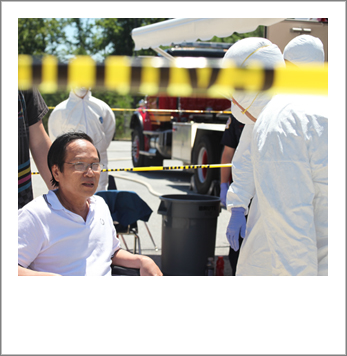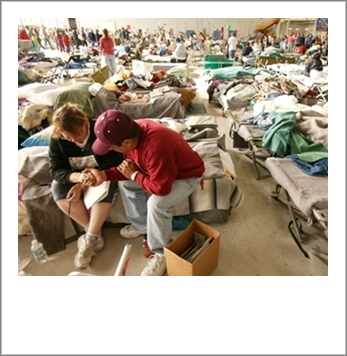Psychosocial Reactions At Risk Groups
The groups who are most at risk following a radiological disaster are children, pregnant women, and mothers with young children. Educational materials and counseling are recommended for pregnant women who are concerned about birth defects.
Emergency workers, including first responders and cleanup crews, also warrant special attention as they can encounter severe stress due to handling contaminated bodies, risk their own health due to exposure, and working long hours in uncomfortable protective equipment.
Others at risk include evacuees, particularly those who are displaced, older persons and people with mental illness, as a radiological event may greatly reduce their social and economic support networks. In his research on the Three Mile Island incident, Dr. Peter Houts illustrates the need to look at these at-risk populations.
The groups who are most at risk following a radiation disaster are:
- Children
- Pregnant women
- Mothers with young children
Emergency workers, including first responders and cleanup crews, also warrant special attention.
Others at risk include:
- Evacuees
- Older persons
- People with mental illness
A radiation event may greatly reduce their social and economic support networks.
Dr. Peter Houts
Associate Professor of Behavioral Science (Retired)
Pennsylvania State University College of Medicine
In addition to the serious mental health consequences discussed for survivors of all disasters, such as generalized disorder, post-traumatic stress disorder, major depression, and alcohol and medication abuse, people who experience radiation disasters may face an additional consequence.
In studies of past radiological disasters, some survivors have experienced “psychosomatic bind,” in which the cause of every illness is attributed to their radiation exposure. This chronic state of alarm finds victims linking even the mildest symptoms to a decline in their overall health and an anticipation of their own death.
Listen to Dr. Peter Houts describe his observations of psychosomatic bind following Three Mile Island.
Mental health consequences for survivors of all disasters:
- Generalized anxiety disorder
- Post-traumatic stress disorder
- Major depression
- Alcohol and medication abuse
In studies of past radiation disasters, some survivors have experienced “psychosomatic bind,” in which the cause of every illness is attributed to their radiation exposure.
Dr. Peter Houts
Associate Professor of Behavioral Science (Retired)
Pennsylvania State University College of Medicine
In the aftermath of a radiation release, it is critical to conduct population monitor to determine the impact. Four parameters should be assessed: contamination, dose received, the level of anxiety felt, and the physical symptoms, both explained and unexplained.
The interaction of these four will determine the initial treatment and on-going monitoring. For example, one group could be uncontaminated and unexposed with high levels of concern and unexplained physical symptoms, such as chest pain, sweating, or diarrhea. For this group, immediate treatment is recommended rather than ignoring the symptoms with no physical cause.
A team approach to monitoring may be an ideal means to address both the mental health and physical needs of the public during a radiation emergency.
In the aftermath of a radiation release, it is critical to conduct population monitoring to determine the impact.
Four parameters should be assessed:
- Contamination
- Dose
- Level of anxiety
- Physical symptoms
A team approach to monitoring may be an ideal means to address both the mental health and physical needs of the public during a radiation emergency.
Dr. Jose Rozental
Former Director of Department of Nuclear Installation and Materials
Brazilian National Commission of Nuclear Energy
When we consider radiation disasters, the consequences include stigma from community and family members, leaving survivors with a loss of social supports that are vital to resilience and recovery. We also see prolonged stress regarding the future health of one's self and children.
In some cases we also find survivors living with psychosomatic bind, in which even minor symptoms are attributed to the radiation exposure and can signal imminent death to the survivor. For evacuees returning to their home, there can be lingering doubts as to the home’s safety.
As we look at the waste repository from the accident in Goiânia, Brazil, we recognize that radiation disasters have long-term environmental, physical, and mental health consequences.
Consequences of radiation disasters include:
- Stigma from community and family members
- Results in survivors having loss of social support
- Psychosomatic bind
- Any minor symptoms attributed to radiation exposure
- Lingering doubts about the safety of one's home
Radiation disasters have long-term environmental, physical, mental health consequences.













